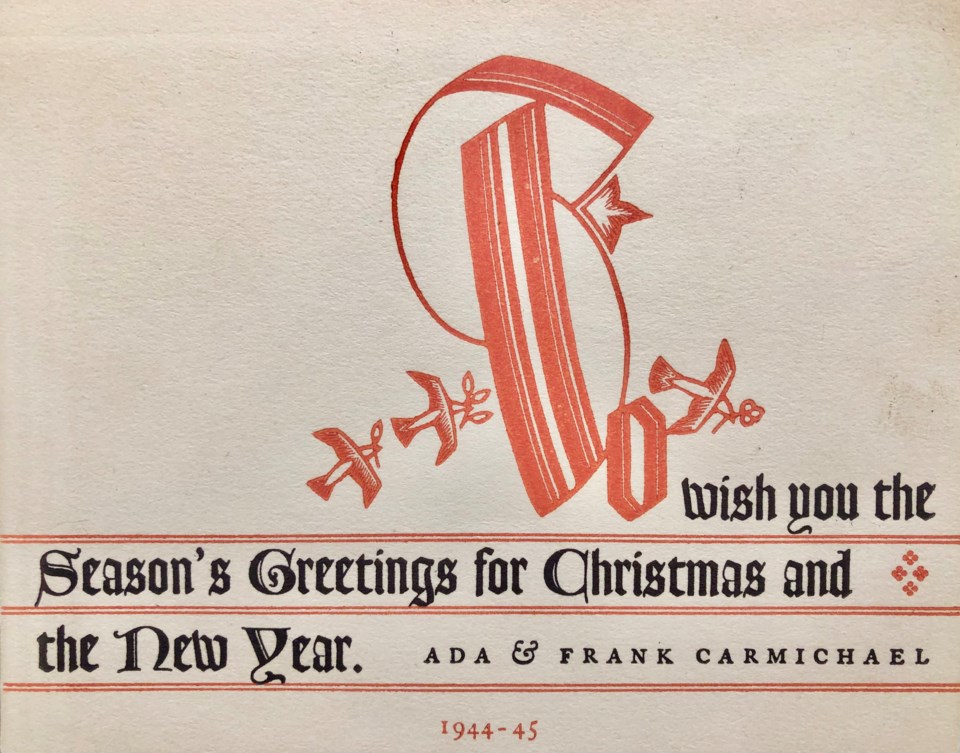Submitted by the Staff of the Orillia Museum of Art & History (OMAH)
Credit for sending the first Christmas card has been most commonly given to an Englishman, Sir Harry Cole. In 1843, he commissioned an artist to create 1,000 engraved holiday cards. Commercially produced cards became available from the late 1880s.
While the tradition of sending seasonal greetings cards has seemingly waned due to electronic communications, one can’t help but feel a special thrill when receiving a paper card in the mailbox. Imagine receiving one that, essentially, is an original work of art.
Orillia-born Franklin Carmichael used his own printing press, which he called The Press of the Wyvern, at his home in north Toronto to produce his family’s Christmas cards, in the 1930s and 1940s. A ‘wyvern’ is a two-footed winged dragon of Welsh mythology.
One family, the Marshs, who were neighbours of the Carmichaels, were the recipients of these small works of art. The cards were addressed from Carmichael and his wife Ada, and in a few cases, their daughter Mary was listed as well.
He also included the text, “printed by hand’ as a marker of value. He used manual wood block printing through his press, a very traditional method. By the 1940s, there were automated methods for printing.
Carmichael’s process would be first, to design and draw the image onto a block of wood. Next, the wood would be carved away, removing a depth of wood around the letters and drawings, so that the design emerges three-dimensionally from the wood.
Once the design was perfectly carved and delineated, a single colour of ink would be applied to the wood block. The block would then be set in a press and the cardstock paper lined up. The inked wood block would be pressed into the paper, using a hand-operated press.
Carmichael has used two colours in this card, pictured. Applying a second colour would require cleaning the wood block, application of the next ink colour and perfect alignment of the block to the paper, so as not to mar the ink already on the paper.
Carmichael was a founding member of the Group of Seven. He co-founded the Canadian Society of Painters in Watercolour with A. J. Casson and Fred Brigden, focusing increasingly on watercolour work.
